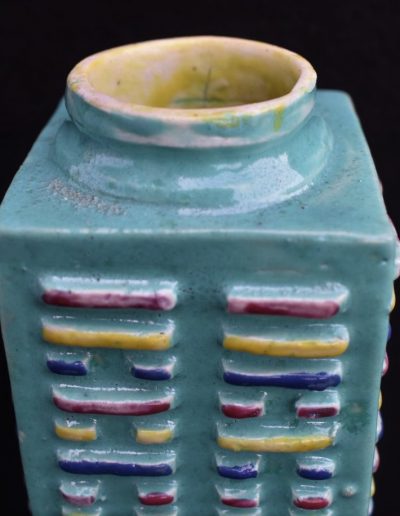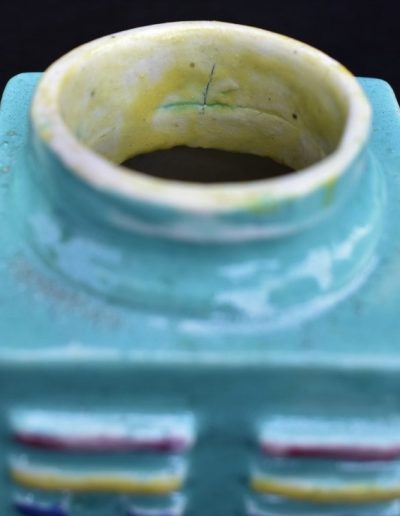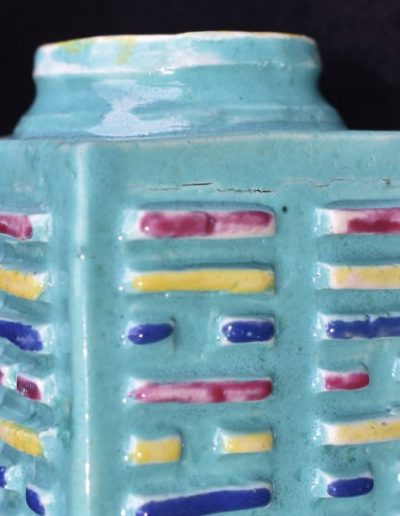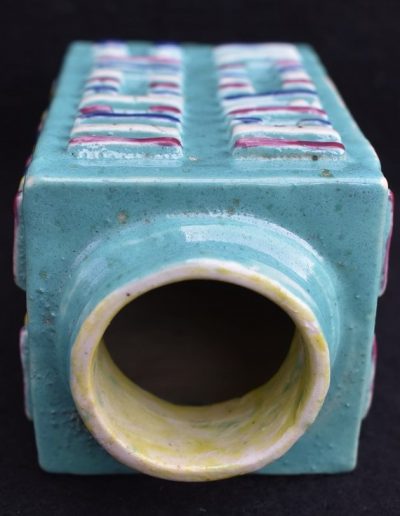Jiaqing or Daoguang Kong trigram vase
H 12 cm W 6.2 cm
€ 800,00
Prijs incl. 6% BTW & Verzendingskosten
Meer informatie
The eight trigrams (three lines) of the I Ching or Yijing (Book of Changes) are based on the five Chinese elements. The book consists of the description of 64 hexagrams. The I Ching can best be seen as a holistic instrument with the statement that everything is connected to everything and everything is continuously in motion, dynamically. Legend has it that the trigrams were copied long ago by Fu Xi (2952 – 2836 BC), the legendary founder of Chinese culture, from the drawing on the shell of a turtle. Each trigram consists of a combination of three horizontal lines superimposed on each other. The lines can be Yin or Yang. A solid line is a (male) Yang line; a line broken in the middle is a (female) Yin line. The eight trigrams are heaven, earth, thunder, water, mountain, wind, fire and more. A hexagram (called the judgment) consists of the combination of two of the eight existing trigrams: a total of six lines. The lines of a hexagram are traditionally read from bottom to top. draw you get two columns, each consisting of three lines, the so-called ‘trigrams’. There are 64 I Ching hexagrams. In China they are best known under the name Zhou. These are the trigrams (八卦 bāguà)::
乾 Qian the Creative tian Heaven
坤 Kun the Receptive di Earth
☵ 坎 Kan the Perilous Pit shui Water
離 Li the Clinging 火 huo Fire
☳ 震 Zhen Exciting Power lei Thunder
艮 Gen Arresting Movement shan Mountain
☴ 巽 Xun Gentle Penetration
風 feng Wind
☱ 兌 Dui Joy and Pleasure
澤 she Swamp
On display is a beautiful exceptional Chinese porcelain Kong Bagua polychrome rectangular vase. On the four sides of a turquoise-glazed ground body, the eight sacred trigrams are placed in high relief and enamelled in purple, blue and bright yellow. The vase has a yellow glazed inside and bottom. Beautifully sculpted foot. It is virtually in pristine condition. It can be dated with certainty to the 1st half of the 19th century, Jiaqing or Daoguang imperial period of the Qing dynasty.
Condition: almost perfect, light wear of the colours.








Reviews